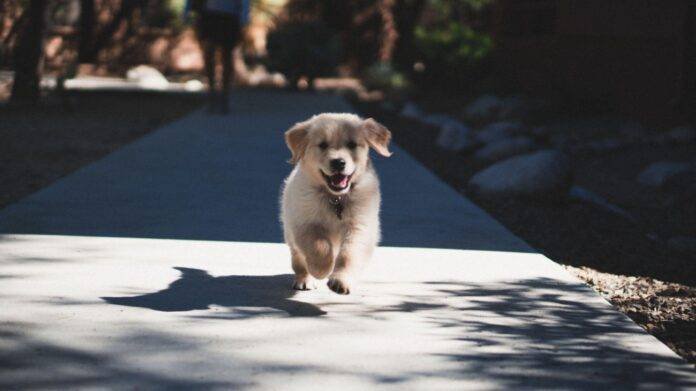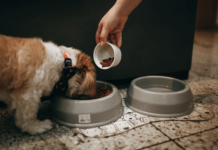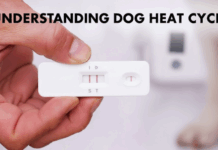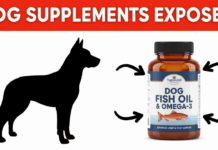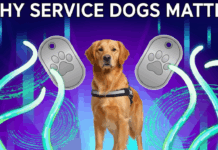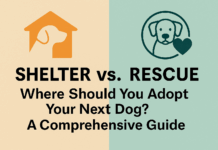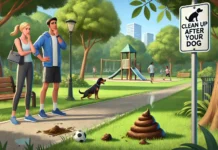Last Updated on September 9, 2024 by Dogs Vets
How to Puppy-Proof Your Home: A Comprehensive Guide
Puppies are small bundles of joy, energy, curiosity, and, well, potential destruction. That sweet little pup bounding through your home is also a four-legged tornado that can turn your living space upside down if you’re not careful.
Puppy-proofing your home is a crucial step in establishing a secure environment that your new furry family member feels safe in.
Why Puppy-Proof?
Much like babies, puppies explore their world with their mouths. If it’s on the floor or within reach, they will chew it, and sometimes, they swallow it.
This act shouldn’t only be seen as a potential threat to your prized possessions but also a significant health risk to your puppy. Puppies also have a knack for getting into places they shouldn’t, leading to potential harm. Therefore, puppy-proofing is essential to ensure your pup’s safety and your peace of mind.
General Puppy-Proofing Tips
The first step in puppy-proofing your home is to think like a puppy. What is at nose or paw level? What might look like an exciting toy to a young canine?
With this perspective, it becomes easier to spot potential hazards. The choice rule of thumb to follow is: if you don’t want it in your puppy’s mouth, it shouldn’t be within reach.
Keep Dangerous Items Out of Reach
Human Food and Medications
Many common foods, such as chocolate, grapes, raisins, onions, and some sweeteners (like xylitol) can be toxic to dogs. For that reason, you should take special care to ensure these items are stored in places that your puppy can’t access.
Similarly, keep all medications locked away. Even seemingly innocuous over-the-counter drugs can be extremely dangerous if ingested by your pup. Always store these items in a secure cabinet.
Household Cleaners and Chemicals
Household cleaners and chemicals are another significant danger. Anything from floor cleaner to anti-freeze can be harmful or fatal if ingested. Store these items high up or in locked cabinets.
Securing Physical Spaces
Secure Trash Cans and Recycling Bins
Puppies are natural explorers and scavengers. To them, a trash can or recycling bin is a treasure trove of fascinating smells and intriguing items.
However, these places also contain many potential dangers, from sharp objects to toxic substances. Invest in a sturdy can with a secure lid or place your trash can inside a latched cabinet.
Secure Loose Wires and Cords
Your pup won’t know the difference between a chew toy and a power cord. Bundle loose wires together and keep them hidden or out of reach to prevent dangerous situations.
Use Baby Gates
Baby gates are an excellent tool to limit your puppy’s access to certain parts of your home, especially when you can’t supervise them. They can also be invaluable for designating a reliably and safe, puppy area.
Choosing Safe Toys and Bedding
Ensure that the toys you provide your puppy are appropriate for their size and age. Try to avoid toys with small parts that could be swallowed, and be aware that even seemingly indestructible toys can be shredded by sharp puppy teeth.
Your pup’s bedding should also be safe and appropriate. Avoid bedding with loose threads or decorations that could be chewed off and swallowed.
Outdoor Areas
Don’t forget to puppy-proof your outdoor spaces. Fences should be secure to prevent your pup from escaping. Remove any toxic plants, and be aware that some mulches, especially those containing cocoa, can be harmful if ingested.
Training is Part of Puppy-Proofing
Puppy-proofing your home isn’t just about physically making spaces safer; it’s also about teaching your puppy what’s appropriate to chew, where to go to the bathroom, and how to behave. Investing in proper training from the start will make both your lives easier.
Remember, puppy-proofing is an ongoing process. As your puppy grows and their behavior changes, you’ll need to adapt your puppy-proofing strategies. Regularly check your home for new potential hazards and address them promptly.
Preventing Runaways and Lost Pets
An often overlooked but vital aspect of puppy-proofing, and one that comes into focus during Lost Pet Prevention Month, is ensuring your home and outdoor areas are secure enough to prevent your pup from running away or getting lost.
Every year, Lost Pet Prevention Month brings new recommendations and raises awareness about keeping pets safe and at home where they belong. Puppies, like all dogs, are naturally curious and may take advantage of an open gate or poorly secured fence to explore the outside world.
Not only can this lead to your puppy getting lost, but it can also put them in danger from traffic, unfriendly animals, and other hazards.
Ensure Doors and Gates are Secure
Puppies can quickly learn how to use their noses or paws to nudge open doors or gates, so ensure that all entrances and exits to your home and yard are securely latched. Also, try to avoid keeping doors open for extended periods.
When coming and going, especially with arms full of groceries or other items, be vigilant that your puppy doesn’t seize the moment to make a dash for the great outdoors.
Use a Leash or Harness
Whenever you’re taking your pup out of a secure area, it’s important to have them on a leash or in a harness. Even if your puppy is usually well-behaved and obedient, all it takes is one unexpected distraction to send them running off.
Invest in a Good Fence
If you have a backyard, a good fence is a worthwhile investment. A proper fence is high enough to prevent jumping over, and check for any gaps or weak spots that a determined puppy might use to escape.
Also, remember that some breeds are more prone to digging, so you might need to take measures to prevent your pup from tunneling under the fence.
Training and Supervision
Training your pup to respond to commands like ‘come’, ‘stay’, and ‘leave it’ can go a long way in preventing runaways.
However, training isn’t foolproof, especially with a young, excitable puppy. Supervision is critical, especially in the early months. Never leave your pup unsupervised in an area where they might be able to escape.
Microchipping and ID Tags
While not strictly a part of puppy-proofing, the options of getting your puppy microchipped and to ensure they wear a collar with an ID tag are worth considering. This will greatly increase the chances of your puppy being returned to you if they do manage to get lost.
By puppy-proofing your home and yard, training your puppy, and supervising them properly, you’ll drastically reduce the risk of them running away or getting lost. Remember, your puppy doesn’t understand the dangers of the world. It’s up to you to protect them.
A Safe Home for a New Puppy
Welcoming a puppy into your home is an exciting time, but it also comes with responsibilities.
By puppy-proofing your home effectively, you’re setting the stage for a happy, healthy relationship with your new pet. This may seem like a lot of work, but remember: it’s all part of the journey.
Enjoy every moment, even the puppy-proofing, because before you know it, that tiny furball will have grown into a full-size dog.
As part of your new journey with your pet, take note of key events like Lost Pet Prevention Month that provide valuable resources and reminders about keeping your pet safe.
Not only are you creating a safe environment for your puppy to thrive, but you’re also ensuring their well-being and reducing the chance of them wandering away or getting lost.
It’s an ongoing effort that requires adaptation as your pet grows, but the bond you’re nurturing is well worth it.
Taking steps to puppy-proof your home not only enhances the safety and comfort of your pet but also brings peace of mind to you as a pet owner. Remember, the love and companionship a dog provides is incomparable, making every step of this journey meaningful and rewarding.
Fact Check
We hope you enjoyed reading this article. What are your thoughts on the topic?
“At [Dogsvets.com], our goal is to bring you the most accurate and up-to-date information on all things pet-related.
If you have any additional insights or would like to advertise with us, don’t hesitate to get in touch.
If you notice any errors or discrepancies in our content, please let us know so we can correct them.
We welcome your feedback and encourage you to share this article with others.”
